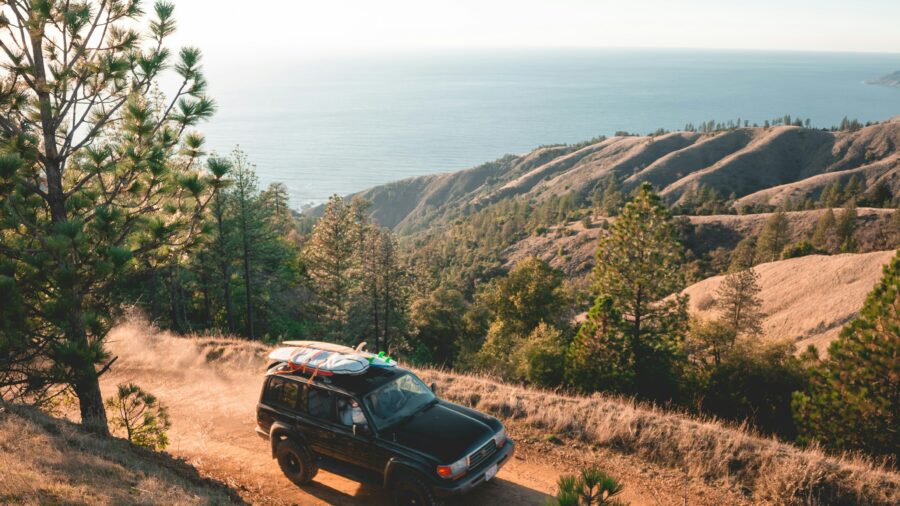Should we kick the big car habit? Australians love big, chunky SUVs and light commercial vehicles that can carry a tonne. There are several good reasons why we like them, including safety, space and tax breaks. But if we kicked the habit, what would we buy instead?
What new vehicles do we buy?
In 2023, we bought new utes and SUVs. The top two were Ford Ranger and Toyota HiLux, followed by Isuzu D-Max and Toyota RAV4. In fact, nearly four out of five were light commercial or SUVs. There was no sign of a Toyota Corolla in the top 10.
- Ford Ranger
- Toyota HiLux
- Isuzu D-Max
- Toyota RAV4
- MG ZS
- Tesla Model Y
- Mitsubishi Outlander
- Mazda CX-5
- Hyundai Tucson
- Toyota Prado
It’s clear what types of vehicles we prefer. Light commercial vehicle sales were buoyant, up 31.2% with a 22.5% market share. SUVs took the biggest market share of 55.8% with 6.5% sales increase. Lagging behind were passenger vehicles with 17.4% market share, in spite of 8.7% sales increase.
However, not everyone can buy new cars. In Australia currently, we buy around two thirds of vehicles used.
Used vehicles in the top 10
The top two most popular used vehicles in Australia are the same as for new ones, but this time the trusty Toyota Corolla takes third place:
- Ford Ranger
- Toyota HiLux
- Toyota Corolla
- Hyundai i30
- Mazda 3
- Mitsubishi Triton
- Toyota Camry
- Toyota RAV4
- Mazda CX-5
- Toyota Prado
While sales are usually two thirds used and one third new, it’s the other way around for Rangers and HiLuxes. People bought more of these new than used (perhaps because of tax breaks on new vehicles carrying over a tonne). Meanwhile, 2 to 4-year old Toyota LandCruiser 4WDs actually sell for 6% more and Suzuki Jimnys for 36% more than new ones.
Why are big cars so popular?
One (big) reason why big cars are popular is because, like big houses, you can fit so much into them. Whether it’s children, pets, surfboards, shopping or just general stuff, these vehicles are accessible and capacious.
Another is their somewhat macho image of ruggedness, strength and adventure, which suggest you could be ready for anything. For example, we love taking road trips:
- Interstate trips – we made 5.7 million in 2022 and 6.3 million in 2023
- Intrastate trips – we made 21 million in 2022 and 22.6 million in 2023.
Then there’s the safety factor, which is a mixed blessing. They’re usually safer for the driver and passengers, but their weight and high ride make them more dangerous for pedestrians and children around them. This is also a concern for EVs, because their batteries make them bigger and heavier than traditional vehicles.
In this time of climbing interest rates, how can people afford big cars? They cost considerably more than small ones. Even so, young families seem to prefer big cars and may be getting themselves into debt to buy them. Many buyers are fleet and business owners or baby boomers, who tend to be less price sensitive.
Big cars appeal to business owners because of tax breaks:
- Businesses can claim an immediate, once-only tax deductible expense with no limit for vehicles that can carry at least a tonne. (The limit is $60,000 for passenger vehicles.)
- They can claim the cost of a new vehicle against last year’s profits if the vehicle creates a net loss for that business.
It’s no surprise if a small business decides to buy a light commercial vehicle whether they need to carry a tonne or not. As a sweetener, they can often park in loading zones.
What would you buy instead?
If you didn’t buy a big car, what would you buy instead? Currently, you don’t have much choice. Small cars are becoming relatively expensive for their size because manufacturers still have to put in the same fuel efficient engines, safety features and connectivity as they do in bigger cars.
Families still want a vehicle that can contain everything and everyone they want to carry around. Current tastes for high riding vehicles make it unlikely that manufacturers will return to offering old-style station wagons.
Some say governments have a role in dissuading people from buying big cars. For example, they could tax heavy vehicles more, based on fuel efficiency as well as weight. The current weight-based registration system helps pay for extra damage to roads but can penalise EVs, which are also heavy. This is why the ACT Government is moving to an entirely emissions-based system in 2024.
Others say governments have no right to interfere in people’s choices. Yet it could be argued governments already do this through laws and regulations, whether it’s how you renovate your house, what you need to run a small business, or when the bottle shop can open.
Ultimately, we won’t change the big car habit, unless we can replace it with another better one.


your opinion matters: